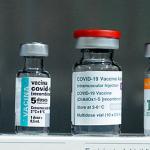Much of the federal government’s response to the raging COVID-19 pandemic in 2020 was admirable.
COVID cases
Temporal trends
There are large swings in case rates (up to 100-fold) but smaller swings for deaths (~15-fold). There are two major peaks in cases and deaths but many more in case fatality ratios (CFRs). [1]
The long view
This winter, we experienced new highs in cases but not in deaths, similarly, across all regions. [1]
“Emergence of new variants of concern, vaccine hesitancy, and barriers to global vaccine equity have created challenges to containing the pandemic.”









